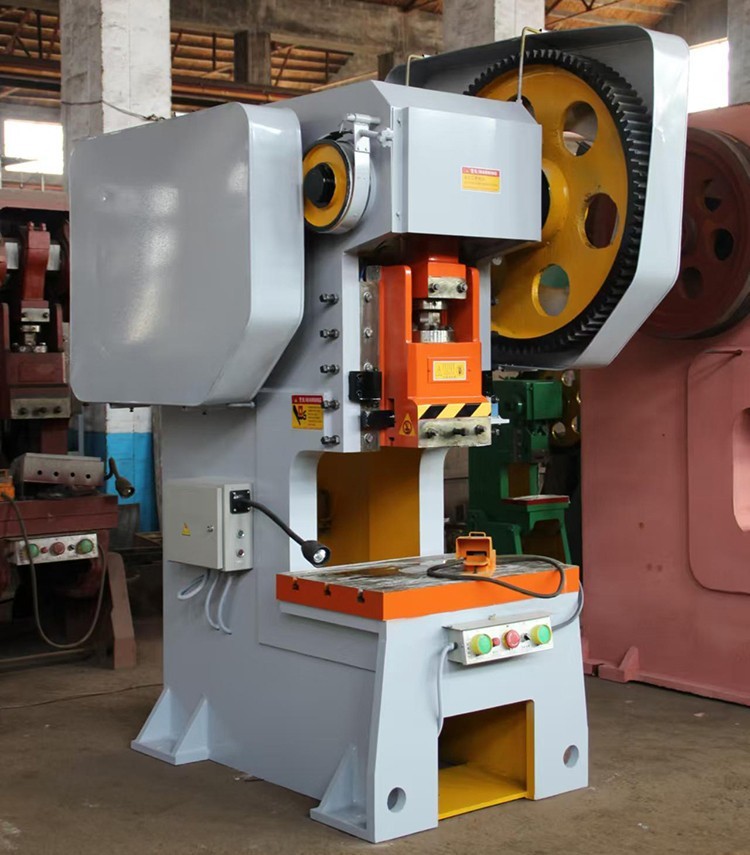We are a professional
punch press manufacturer with over 10 years of industry experience. Today, we would like to introduce to you:
The noise sources of punching machines are diverse, mainly divided into two categories: no-load noise and load noise. The following is a detailed analysis of these two types of noise sources:
一、 No load noise
1. Motor noise
As the power source of the punch press, the electric motor generates various noises during operation, including electromagnetic noise, aerodynamic noise, and mechanical noise. Electromagnetic noise is mainly generated by the interaction of alternating electromagnetic fields that excite the vibration of the rotor and stator, usually high-frequency noise. The aerodynamic noise is mainly caused by cooling fan noise, which is the main source of noise for many electric motors. Mechanical noise includes noise generated by non-equilibrium force excitation of rotating moving parts and noise generated during component vibration.
2. Gap noise in the working mechanism
The crank connecting rod slider mechanism of the punch press has three pairs of friction pairs, namely the crankshaft journal and the curved bearing shell, the crankshaft journal and the connecting rod big end bearing shell, and the connecting rod small head (ball head) and the slider ball head seat. Due to manufacturing and assembly errors as well as work requirements, gaps are inevitably present between these components. When they transition from free movement to contact movement, strong impact noise is generated, which has a wide frequency band and strong high-frequency parts. The larger the gap, the higher the noise.

3. Clutch noise
When the clutch is engaged, many punching machines will produce a "jingling" sound, which is an intermittent sound caused by the collision between the inertia force of the slider and connecting rod during reciprocating motion and the centrifugal force of the crankshaft's rotating mass. The magnitude of clutch noise is related to the impulse received during engagement, the stiffness and damping characteristics of the contact material. There are two types of clutches: rigid and friction type. Among them, the rotary key type is the most widely used in small and medium-sized punch presses, but the noise is relatively high, which is caused by a series of impacts.
二、 Load noise
1. Twisting noise
The torsional noise is related to factors such as plate thickness, hardness, geometric shape, hammering speed, and die clearance of stamped parts, and the noise increases with the increase of these values. During the operation of the punch press, the collision impact between the punch and the sheet metal, as well as between the discharge plate and the billet, will be greatly enhanced. As the impact speed increases, the impact sound will also increase.
2. Cutting noise
The noise level varies greatly depending on the stamping process. The noise of sheet metal punching is greater than that of bending and deep drawing, while the noise of forming processes such as embossing, embossing, flanging, bending, and deep drawing is smaller. During the punching process, when the punch comes into contact with the metal sheet, the punching force begins to increase, causing the body and other load-bearing components to deform and accumulate elastic properties. When the punch enters about half the thickness of the sheet metal, the punching force reaches its maximum value. At this point, the sudden fracture of the board will cause the punch to suddenly lose load, and the accumulated elastic energy of the machine body and other components will be released in a very short time, causing vibration of the machine body and various components, resulting in impact noise.
三. Other noises
The spacing between punch presses can also affect the noise level. When the distance between the punch press and the left, right, front, and rear punch presses is less than the standard size specified in the factory design specifications, the punching noise will increase. Installing punch presses with excessive density can also significantly increase noise levels. In addition, the net space in the stamping workshop cannot be too small, otherwise it will cause noise refraction and reverberation, increasing the noise.
In summary, the noise sources of punch presses are complex and diverse, and need to be controlled and treated from multiple aspects. In practical operation, the noise of the punching machine can be effectively reduced by improving the mold structure, reducing the cutting noise, replacing the flat die with a slanted die, reducing the impact speed of the hammer, and arranging the punching machine workshop reasonably.
If you are interested in punching machines, please contact us.

 Address:Room 1202, Detaitang Building, No. 118 Huaguang Road, Zhangdian District, Zibo, Shandong
Address:Room 1202, Detaitang Building, No. 118 Huaguang Road, Zhangdian District, Zibo, Shandong WhatsApp:+8615653328535
WhatsApp:+8615653328535 Wechat: +8615965331535
Wechat: +8615965331535  E-mail:zs@sdsmachinery.com
E-mail:zs@sdsmachinery.com